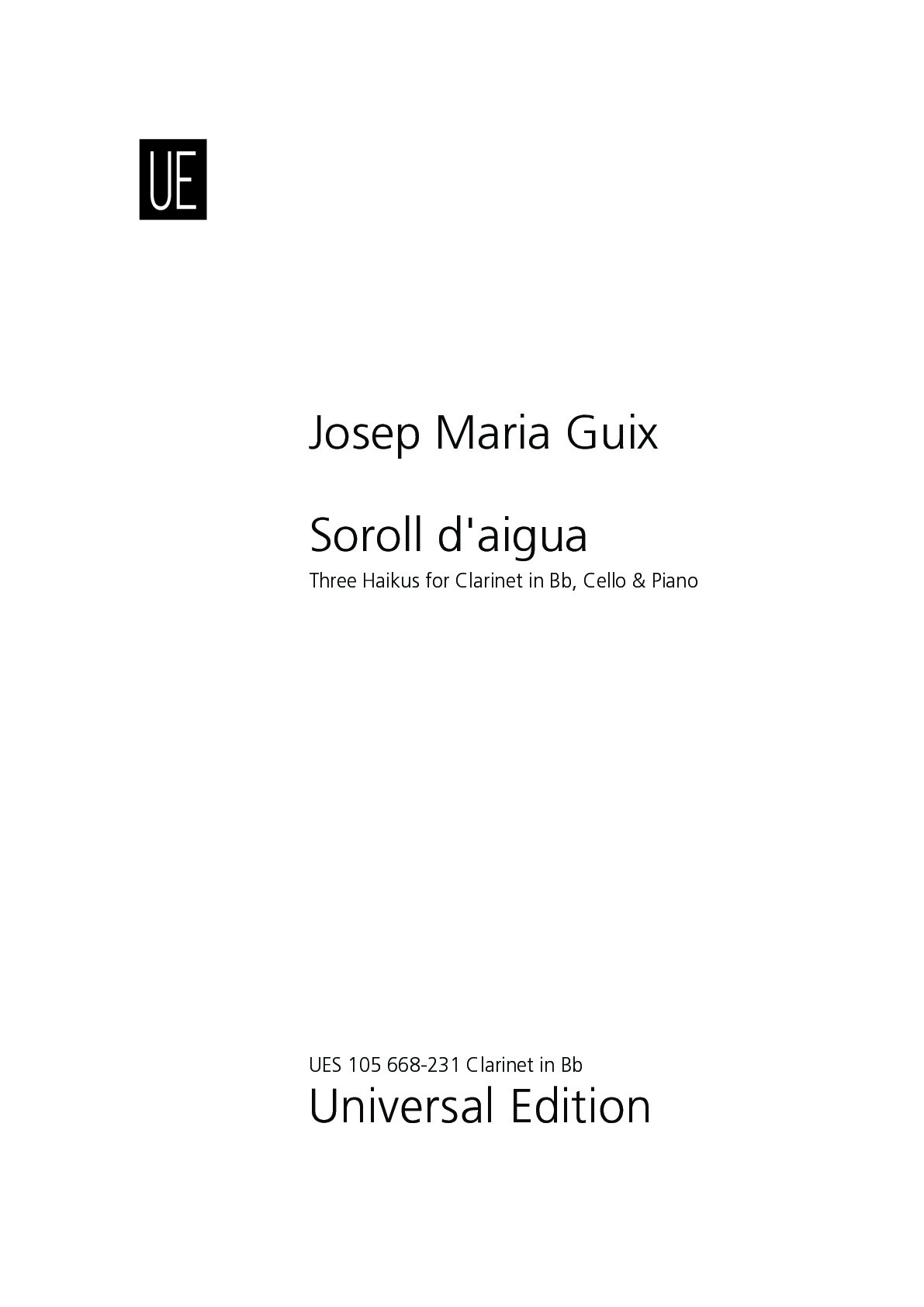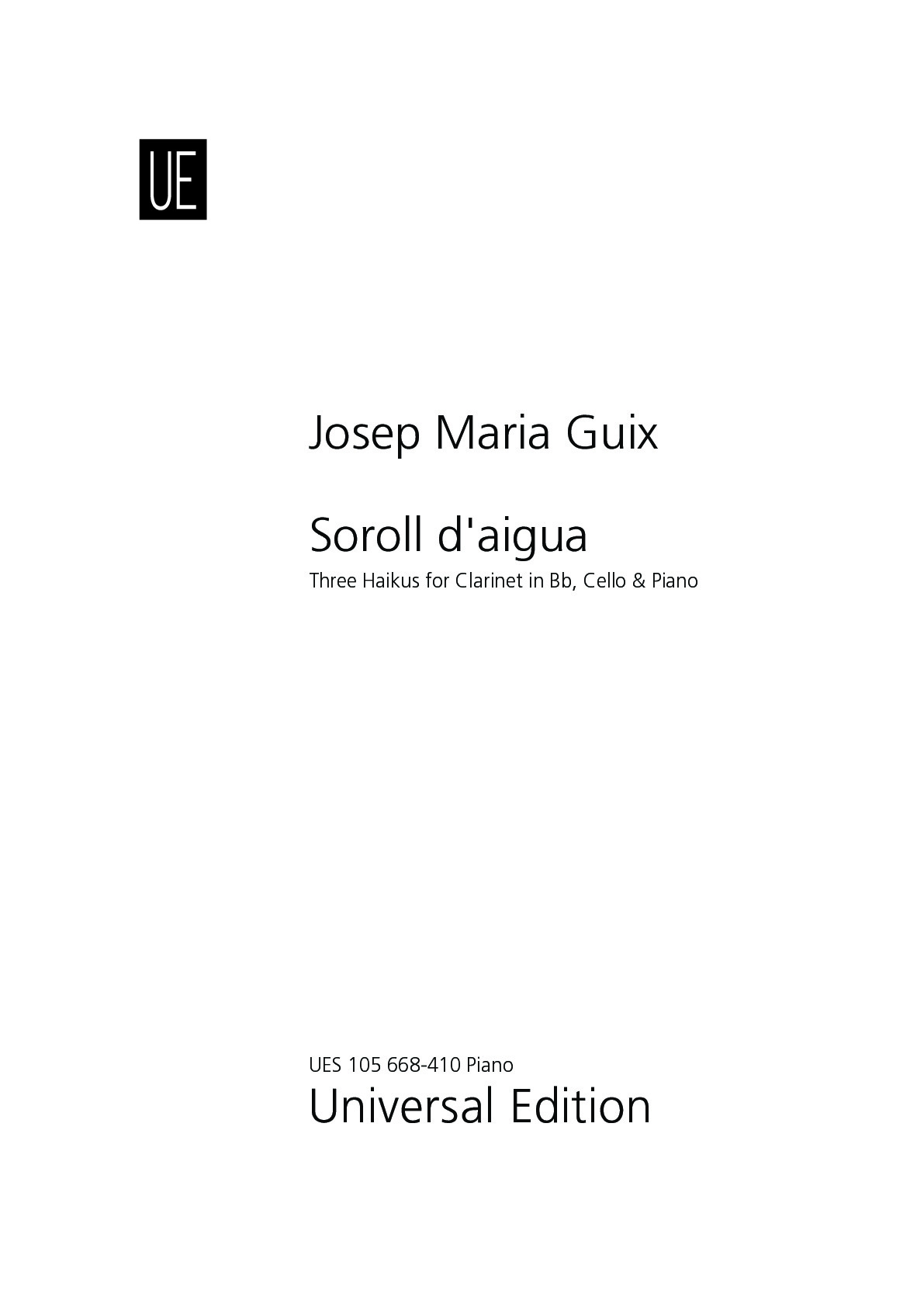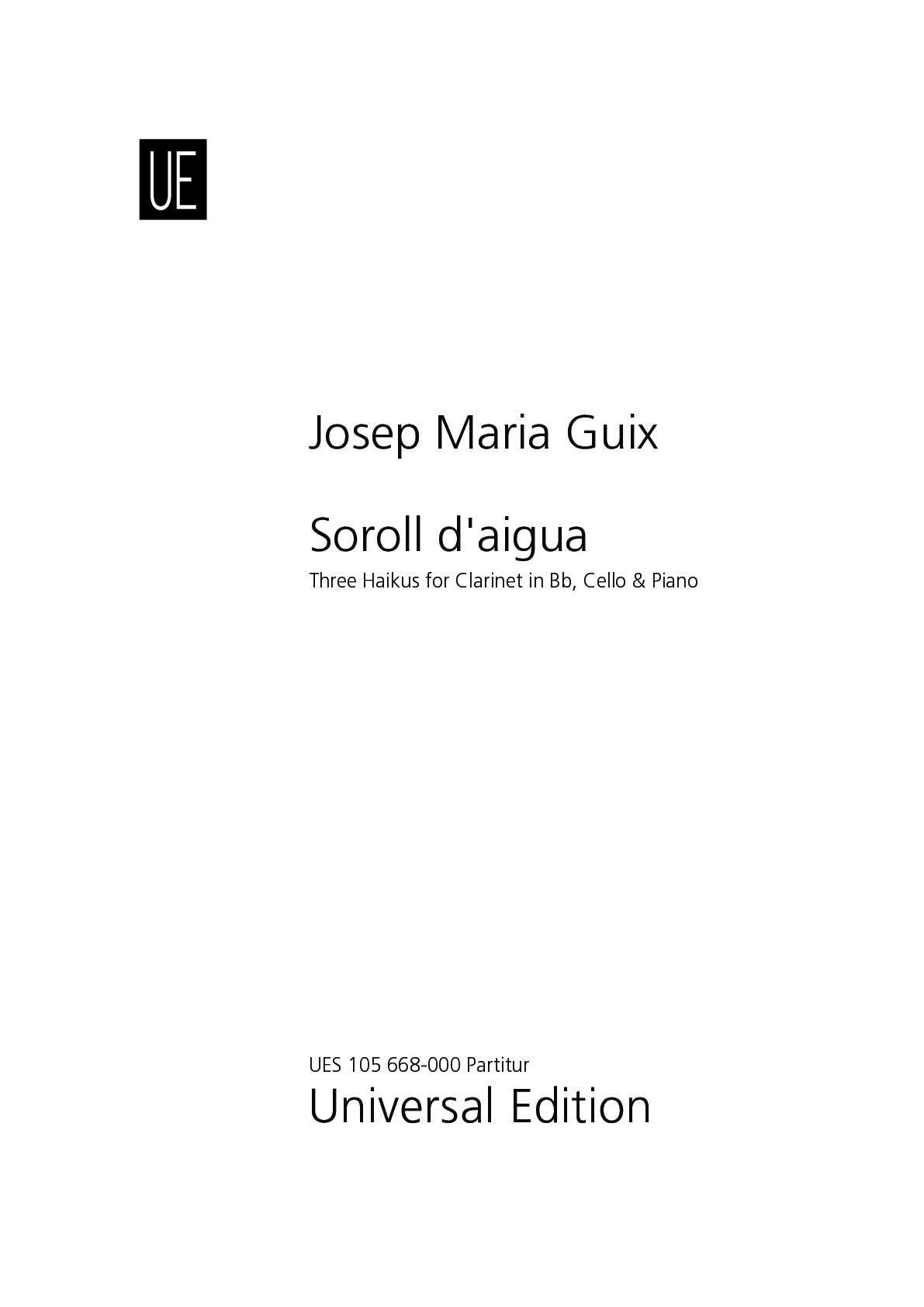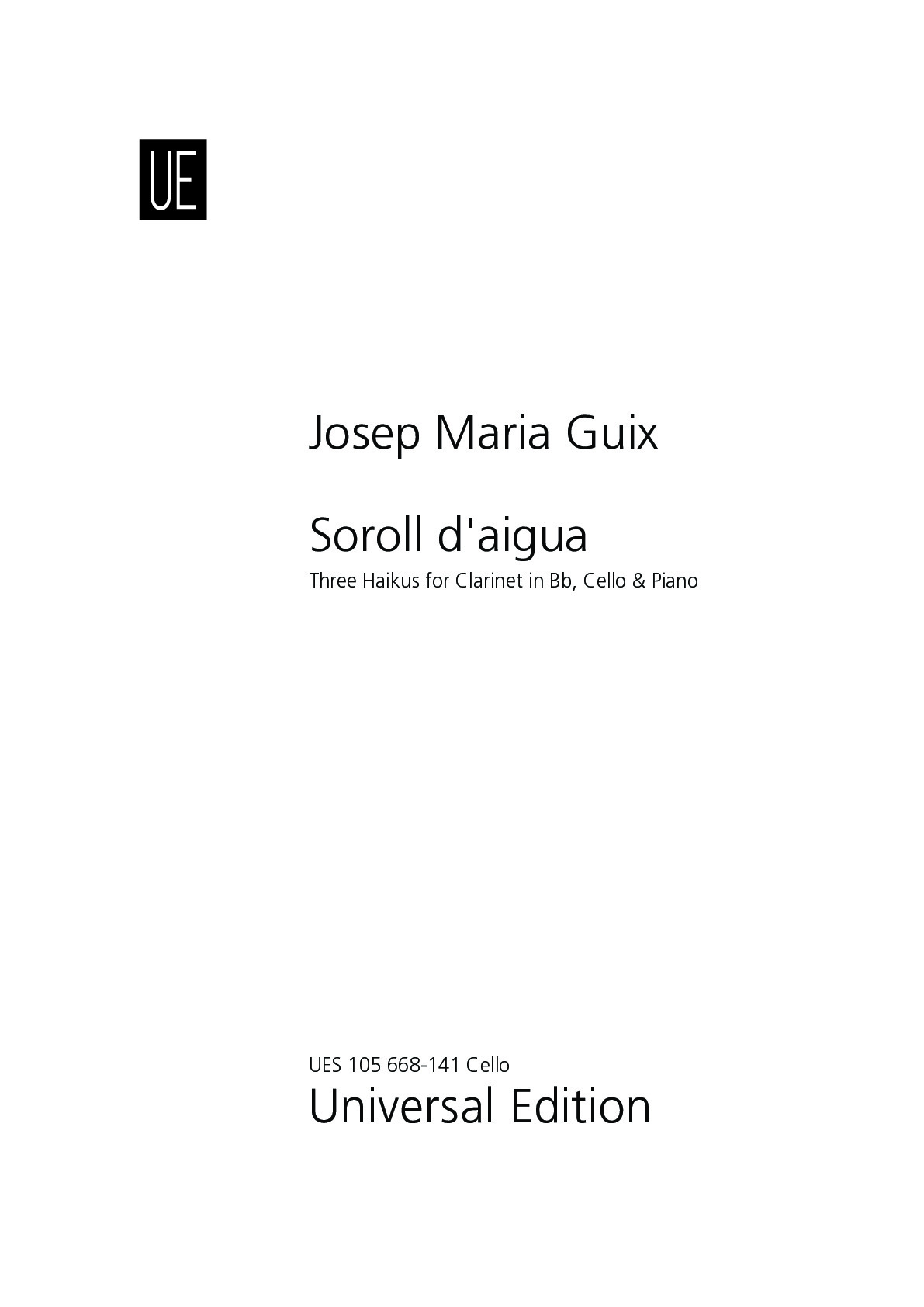

Josep Maria Guix
Soroll d'aigua
Duration: 7'
Instrumentation details:
clarinet in Bb
piano
violoncello
Soroll d'aigua
Sample pages
Video
Work introduction
The title of this short composition, articulated in three movements, comes from one of the haikus that inspired it. The presence of water (sea, streams, rain) is also the common background of the selected Japanese poems.
The beginning of the first movement hints at a cold and distant winter while incorporating the singing and sounds of whales (performed by the two melodic instruments). It continues with a hopeful spring, where the flowing water is highlighted by the piano.
The second haiku is a tranquil summer nocturne with extended descending lines and ethereal sounds.
The piece concludes with a musical reference to rain, initially in its most vehement sense (thunder) and then in a more delicate manner (interrupted delays on the piano, tremolo on the cello). Here, the clarinetist uses also a rainstick.
This is concentrated, refined, subtle music, seemingly simple to listen to but extremely challenging to perform due to its fragile sound quality.
I
Trenc d’alba.
Buf de balenes.
Mar glaçat.
Gyôdai
Alba de primavera.
Clareja
amb soroll d’aigua.
Setsuko
II
Arriba la calma.
Aigua submergint-se
en el capvespre d’estiu.
Masaki Yûko
III
Si escolteu atentament el tro,
sentireu mil sorolls
diferents.
Shiki
Capvespre.
Entre les canyes tallades
la pluja.
Shiki
I
Alba.
Soplo de las ballenas.
El mar helado.
Gyôdai
El alba de la primavera.
Amanecer
con rumor de agua.
Setsuko
II
Agua que se tranquiliza
sumergiéndose
en el atardecer de verano.
Masaki Yûko
III
Si escuchas con atención el trueno,
se oyen mil ruidos
diferentes.
Shiki
Crepúsculo.
Por entre los cáñamos segados
la lluvia.
Shiki
What is necessary to perform this work?
Clarinet player must play also the Rainstick in the last movement.




